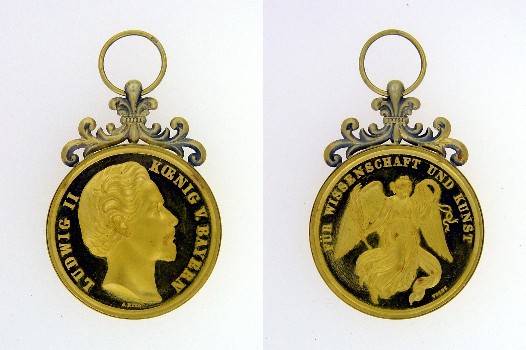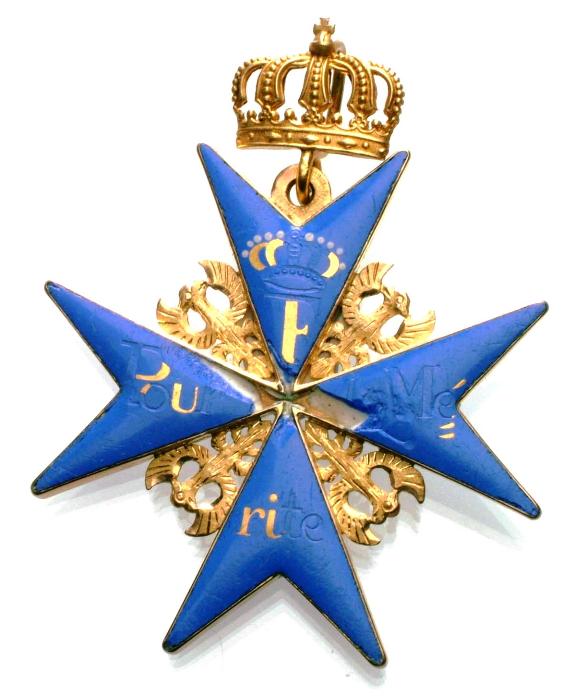
medalnet
-
Posts
897 -
Joined
-
Last visited
-
Days Won
3
Content Type
Profiles
Forums
Blogs
Gallery
Events
Store
Posts posted by medalnet
-
-
Since I had talked about the early 19th century PlM making I like to introduce everybody to the Bavarian medal for Arts & Science in gold. Those of you how had the chance to examine such a piece may have realized that the medal consists of two parts, the medal itself and a device that enables the recipient to carry the decoration.
Some may have even realized that the ring and the suspension look a little bit off color, even tarnished. The reason for this is the lower cold content of the devise. Mixing gold with other type metals created a more rigid mix that would withstand the constant stress of weight and moving. A pure gold (Dukatengold) would have not been able to support the weight of the Arts & Science medal. Medals would have probably fallen out of its carrying devise.
You might ask now, why they did not just solder the suspension directly to the medal. Well, the pure gold would melt easily. Also, attaching something more ridig would cause a total regilt of the decoration.

 0
0 -
Correct, in those early days of medal making a different technique was used.
Those early PlMs are always built up like this one. A base porcelain (filler) with a fine top coat. It was all about saving the gold. Unfortunately the way of doing this was not to stable. Hossauer was believed to be the one that revolutionized the way of doing this in Prussia. Making order decoration hollow with thin enamel layers.
0 -
Solid gold...if we are lucky a thin foil. It is more solid enamel/porcelain.
 0
0 -
This Pour le M?rite is missing (among others) in the newest attempt to summaries this high Prussian order decoration.
It is made from enamel/porcelain and gold. The lettering is/was embedded in the enamel, which one can easily see due to the unfortunate crack.
I do not have a name that would go with this example, but am lead to believe that this cross was one awarded during the Napoleonic wars. Similar examples which have been attributed during the 1807 incidents look similar.
The crown, of course, was added 50 years later and resembles the later style.
[attachmentid=13588]

 0
0 -
I totally agree. The recipients for the RAO 3 Schw Krone are known and had a lot more decorations then just this one.0
-
But see, there you go again, typical Godet made swords on those two Prussian awards. Certainly it makes sense to talk about window or display decorations.
I have a bar myself, that looks kind of akward. And again finest godet made stuff from arround the 1870th. Iron Cross 1870, House Order of Hohenzollern knight with swords, Red Eagle Order 4th class with swords and Order of the Crown 3rd class with swords
0 -
Maybe a window decoration. Not impossible.0
-
Just to add to the fact. The Red Eagle Order 3rd class with crown and swords from my web page came from a medal bar of one of the known bearers and would have to be considered as a "Spangenstueck".0
-
-
-
Thank you very much for your kind remark.
I am sorry to say, but I would have to see this particular piece life to say anything conclusive.
0



Star of Brabant ribbon bar
in Germany: Imperial: The Orders, Decorations and Medals of The Imperial German States
Posted · Edited by medalnet